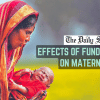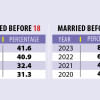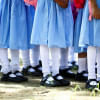Why are so many girls still married early?

Child marriage, early pregnancy, and sexual harassment and violence are among the most persistent challenges plaguing the lives of adolescent girls in Bangladesh. While resistance to these trends has grown over the years, recent studies suggest that progress has been minimal, if not entirely stagnant. For instance, child marriage, often caused by a combination of poverty, entrenched social norms, and legal enforcement gaps, remains a blot on the country's otherwise positive records in some socioeconomic aspects. A UNICEF report, released on International Women's Day, reveals that Bangladesh has the highest child marriage rate in Asia, with 51.4 percent of women aged 20-24 married before they turned 18. This is quite alarming.
Further details from the report—such as that 24 percent of young women give birth before 18, and 28 percent of girls aged 15-19 have experienced physical or sexual violence from their partners—show how widespread and devastating the impact of child marriage has been. Moreover, only 47 percent of married teenage girls have autonomy over reproductive health decisions. According to the report, Bangladesh is also one of seven countries with less than two percent of adolescent girls having digital literacy. Girls aged 15-24 are twice as likely as boys to be out of education, employment, or training, making them more vulnerable to poverty and exploitation.
These findings show how the stakes remain heavily stacked against adolescent girls, especially if married early. The question is, why are we failing to do anything about it? This is not just about how barriers to girls' education and personal autonomy are hindering their life prospects; it's also about how their lack of agency and social empowerment is putting them in life-threatening situations. As well as risky pregnancies, intimate partner violence, or violence by husbands, remains another serious concern. In a climate where, according to a recent study by the Bangladesh Bureau of Statistics, 54 percent of women experience physical and/or sexual abuse by husbands at some point, young wives are more vulnerable. The fact that this threat is rarely acknowledged by society reeks of the still-pervasive patriarchy that justifies or covers up such violence citing family reputation and children's well-being.
The reality is, child brides are children, too, and we need to be able to protect them from this scourge at any cost. Two persistent obstacles to ending child marriage are financial hardships and weak law enforcement—problems that transcend gender issues but which must be addressed precisely because of such devastating impacts. We urge the authorities to adopt a zero-tolerance approach to child marriage, regardless of the reason behind it, and address the issues that continue to fuel it.


 For all latest news, follow The Daily Star's Google News channel.
For all latest news, follow The Daily Star's Google News channel. 










Comments